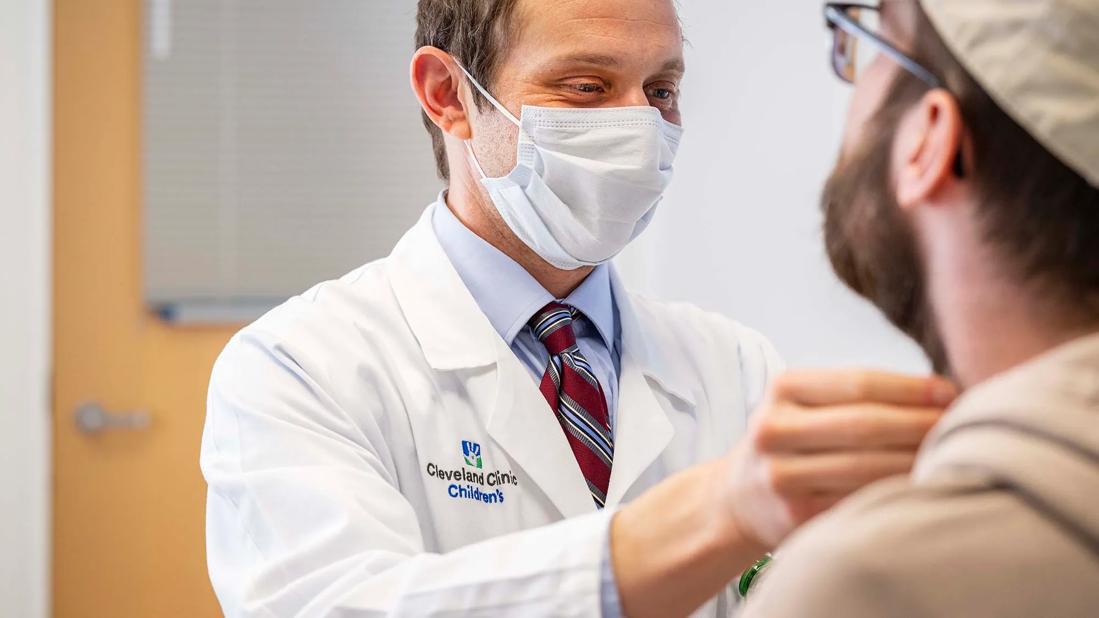Largest study of its kind identifies three treatment exposures that contribute to risk

Childhood cancer survivors have a more than two-fold increased risk of developing melanoma during their lifetime, compared to the general population, as well as a two-fold increased risk of death associated with a melanoma diagnosis. So reported a team of researchers in the Journal of Clinical Oncology.
Advertisement
Cleveland Clinic is a non-profit academic medical center. Advertising on our site helps support our mission. We do not endorse non-Cleveland Clinic products or services. Policy
In a retrospective review of more than 25,000 participants, the largest study of its kind, the authors confirmed what experts have long suspected was true. “We've believed for a long time that melanoma as a subsequent malignant neoplasm is an issue among childhood cancer survivors. Some of these tumors are caused by genetics, and some are caused by the treatment, but we didn't know exactly was driving the risk,” says first author Seth Rotz, MD, a pediatric hematologist/oncologist at Cleveland Clinic. “What is it about being a childhood cancer survivor?” was a particularly vexing question for Dr. Rotz, who leads the Cleveland Clinic Children’s Survivorship Program.
Additionally, the study identified three treatment exposures— high-dose radiation, a class of chemotherapy known as alkylating agent exposure, and bleomycin—contributing to this subsequent malignancy, raising important considerations for care-making decisions.
Melanoma is the fifth most common cancer in the United States. In the general population, age is the most significant risk factor for developing melanoma. "A 70 year old is just by nature of having 70 years of life much, much more likely to have melanoma than a 15 year old. We hardly ever see melanoma in kids," says Dr. Rotz.
But as childhood cancer survivors grow into adults, they are more likely than the general population, to develop melanoma. This has been generally accepted in the cancer community, but the specifics have not been well-understood.
Dr. Rotz and colleagues utilized the Childhood Cancer Survivor Study (CCSS) cohort. The data set enabled the researchers to probe decades’ worth of information to analyze longer follow-ups and a larger population size in a more granular way than in previous studies. The data also include information on radiation sites, chemotherapy, and other treatments participants may have received.
Advertisement
The cohort comprises five-year cancer survivors younger than 21 in the U.S. and Canada, all of whom were diagnosed between 1970 and 1999. Initial diagnoses include leukemia, lymphoma, central nervous system cancer, renal cancer, neuroblastoma, rhabdomyosarcoma or bone cancer.
Among the 25,716 participants, 177 melanomas developed in 160 survivors. Of these, 100 were invasive, 62 were in situ cutaneous, and five were ocular. The median onset of childhood cancer diagnosis to melanoma diagnosis was 26.4 years (5.9-48.7).
The researchers write in their report, “Survivors who developed melanoma were more likely to be white, non-Hispanic, older at primary cancer diagnosis, and treated in earlier treatment eras.”
The 40-year cumulative incidence of any melanoma was 1.1% (95% CI, 0.9 to 1.4). However, the cumulative incidence increased among groups who received high-dose radiation, alkylating agent exposure, reported as cyclophosphamide equivalent dose (CED), and bleomycin were as follows:
Dr. Rotz contextualizes these findings, noting that these data reflect practices dating back to the 1970s.
For example, updated treatment protocols, including lower doses and more precise delivery of high-dose radiation, has changed significantly over the past several decades. Currently, bleomycin is mostly used for germ cell tumors and Hodgkin's lymphoma in the pediatric oncology setting—and is increasingly being edged out as treatment for the latter in favor of newer immunotherapies. And, finally, while alkylating agents are more variable in practice, news trials are testing whether updated, less toxic regimens are effective.
Advertisement
Participants who developed melanoma also had a two-fold increased risk of death, compared to other childhood cancer survivors, but not necessarily because of melanoma, Dr. Rotz cautions.
“We suspect that melanoma, while it can be incurable in some people, is a bit of a canary in a coal mine in terms of predicting other bad outcomes,” he speculates. “It’s possible that study participants who were exposed to these drugs and radiation were more likely to develop melanoma and were also more likely to develop other cancers as well.”
Though an interventional trial is needed, Dr. Rotz notes that the findings should raise suspicions for melanoma in childhood cancer survivors and augment providers’ messaging around prevention and screening strategies.
“In addition to reinforcing the importance of sunscreen and sun protection, these patients may benefit from an annual dermatologist visit for a full skin exam,” he says.
Advertisement
Advertisement

Percutaneous stabilization can increase mobility without disrupting cancer treatment

New guidelines update recommendations

Simple score uses clinical factors to identify patients who might benefit from earlier screening

Neoadjuvant immunotherapy improves outcomes

Use of GLP-1s and improving cardiovascular health lowers risk of hematologic malignancies

Highly personalized treatment shrinks tumors resistant to immunotherapy

Slower drug elimination from the body among females may impact safety and efficacy

Cleveland Clinic Cancer Institute among select group of centers to administer highly personalized treatment